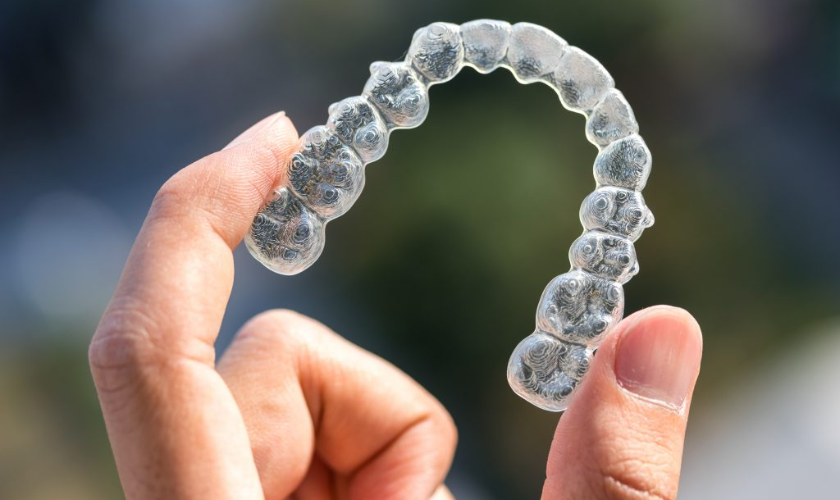Invisalign is a new marvel in the dynamic field of orthodontics, offering not just straighter teeth but also a revolution in dental aesthetics. Nonetheless, myths cloaked in doubt remain. This blog seeks to dispel myths regarding Invisalign treatment by peeling back the layers of misinformation. As we begin on this adventure, we’ll debunk common fallacies while investigating Invisalign’s unique ability to meet a wide range of orthodontic demands. As we offer clarity to the frequently misunderstood domain of invisible aligners, say goodbye to uncertainties and embrace a story that affects not just smiles but perspectives.
Common Myths And Misconceptions:
As much as twenty percent of the world’s population has a perfect bite, and braces are frequently used to correct alignment issues. With an average Invisalign treatment period of one year and a patient satisfaction rate of up to 96%, Invisalign, a popular treatment option, can be used to fix minor alignment abnormalities. However, several frequent myths and misconceptions about Invisalign therapy might influence the treatment’s success.
Myth 1: Invisalign Is Only For Minor Alignment Issues
Invisalign isn’t just for minor tooth misalignments; it may also treat overbites, underbites, crowded or widely spaced teeth, and other orthodontic disorders. It is great for treating minor alignment abnormalities, including overcrowding, gapped teeth, underbites, overbites, crossbites, and open bites. Because Invisalign treatment is tailored to each patient’s specific requirements, it may be used to correct a wide range of dental issues other than misaligned teeth. It has several advantages over traditional braces, including better eating and cleaning freedom, less pain throughout treatment, and being almost unnoticeable by others. The capabilities of Invisalign go beyond correcting crooked teeth.
Myth – 2: Invisalign Treatment Takes Longer Than Traditional Braces
Invisalign treatment is frequently compared to traditional braces in terms of duration. However, it can be speedier owing to technological developments such as SmartTrack material. Invisalign creates treatment plans using modern technology, allowing for exact modifications at each stage. This results in fewer orthodontic appointments and less time spent in waiting rooms. Invisalign, unlike metal braces, does not require regular adjustments. Invisalign treatments typically take 12 to 18 months, compared to two years for braces. Patients should wear Invisalign correctly for 22 hours a day, change them according to their schedule, brush, and floss twice a day, and replace them before going to bed.
Myth-3: Invisalign Is Uncomfortable To Wear
Custom-made Invisalign aligners fit tightly over teeth, delivering a pleasant and secure fit. While some people may feel some discomfort in the first few days, this is an indication that the therapy is working. Invisalign aligners are constructed of smooth, BPA-free plastic with no metal brackets or wires that might irritate the mouth’s sensitive tissues. Invisalign aligners, unlike traditional braces, do not include brackets or wires that might irritate the gums, cheeks, tongue, or lips. Mild pressure is frequent throughout treatment or as the teeth adjust, but pain from clear aligners usually disappears as the teeth adjust. For those looking for a comfortable and secure aligner solution, Invisalign aligners are a safe and effective treatment option.
Myth 4: Invisalign takes more upkeep than conventional braces
Invisalign treatment is sometimes seen as requiring more upkeep than conventional braces, although it, in fact, requires just basic cleaning habits. Patients may remove the aligners for meals and routine cleaning, making maintenance easy. If food particles become lodged between the brackets and wires of traditional braces, they can cause decay or gum disease. Rinse the aligners with water and gently brush them with a soft-bristled toothbrush and mild soap to keep them clean. Hot water and harsh cleansers should be avoided as they may harm the plastic. It is also critical to wear each set of aligners for 1-2 weeks before moving on to the next set. Despite the extra upkeep, the advantages of glass aligners over metal brackets and wires make Invisalign a worthwhile investment.
Myth-5: Certain Foods Must Be Avoided When Wearing Invisalign:
Invisalign, a removable orthodontic brace, is more flexible and pleasant than conventional braces. They are not as stringent as the notion that you must avoid particular foods when wearing Invisalign. The aligners may be removed when eating, preventing food from being caught in the braces. However, sticky and difficult-to-chew foods like caramel and popcorn, as well as sweet and acidic drinks like soda and citrus juices, are not suggested since they can promote tooth decay and discoloration. A balanced diet is essential for good dental health, and aligners should be removed before eating and properly cleaned before re-positioning.
In the fabric of orthodontic innovation, Invisalign appears as a transforming experience rather than merely a choice. As we dispel falsehoods, the brilliance of Invisalign becomes clear—a flexible, pleasant, and discrete solution. Accept the truth that goes beyond preconceptions, providing not only a straighter smile but also a journey distinguished by convenience and confidence. Finally, let us enjoy the revealed facts, helping people towards a decision that goes beyond aesthetics—a decision that coincides with the dynamic, ever-changing environment of modern orthodontics. The Invisalign experience is about changing the story of orthodontic treatment, not just correcting it.

